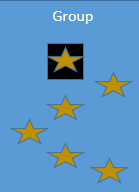A Twist On Teaching (Part 2)
This is a continuation of a previous blog post entitled “A Twist On Teaching” that explained two ways to enhance teaching: embedding teaching into activities and including group activities. Many more of these methods exist and in this “Part 2” post, we will elaborate on this topic and discuss how you can further enhance teaching by:
- Gamifying the learning process
- Picking what your children prefer
- Gamification:

A fantastic way to enhance the learning process is to make learning itself a game! One great way to do this is to incorporate competitive and cooperative components into the activities that are entirely dependent on correct responding of the skills.
Competition:
Children can be split up into teams. When a child on a team correctly engages in the skill, their team can earn a star. The star can be placed on a “leader board” (see example below). The first team that earns enough stars to reach a goal can get access to a reward like a dance party, toys, or snacks. The goal is chosen before the activity and can be adjusted based on performance.
Example Competition Leader Board:

In this example, Team B reached the goal (the black square which is placed at 4 stars) first, and thus gained access to the reward.
Cooperation:
Children can all be in a single group. When any child correctly engages in the skill, the entire group can earn a star. The star can be placed on a “leader board” (see example below). If the entire group earns enough stars to reach the goal, they can all gain access to a reward. If the children do not reach the goal, then they all do not gain access to the reward.
Example Cooperative Leader Board:

In this example, the group earned enough stars to reach the goal (the black square which is placed at 6 stars) before the end of the game, and thus gained access to the reward.
Rewards that can be used can consist of dance parties, snacks, high-fives, hugs, access to toys etc. To find what rewards children like most, you can ask the children what they prefer (see more below)!
- Child Preference:

Preference is an important and effective technique to add to teaching! Asking children what they prefer can increase successful teaching and allows the child to be a part of the learning process. There are multiple ways to incorporate preference into teaching. We have outlined a couple below:
Rewards that children can earn or win: Preference can be used to find out what items the children want as a reward following accurate responding in teaching. These items can include food, toys, technology, and more! Using the items the children prefer as rewards can increase their accurate responding in the future! Preference for these items can be determined a few different ways.
-One way is to ask the children what they would like to earn. Teachers can also provide options for the child to pick from (i.e. “Would you like to earn the iPad, your doll, or a book?”).
-In addition, laying out some potential items in front of the child and asking the child to pick one is another great way to find out what the child prefers to play with or earn following correct responding.
-Another way to determine rewards a student can earn is to watch the student in the room with all their toys. By doing this, you can see which toys the student spends the most time with and then use those toys as the rewards.
Preferred games to play: Preference for the different types of games you play during instruction can also be determined.
This can be done by either asking the child what game they want to play or even having a picture of the games present in front of the child and asking them what game they would like to play.
Preference for how you teach: You can also ask children which teaching style or methods they like best. For example, you can find out whether children prefer being taught in competitive or cooperative teaching styles, table top or on the floor, or even group or individual teaching.
You can do this by associating a specific color or picture with the different teaching styles. The pictures can be associated with the teaching styles. After each picture has been associated with the teaching styles multiple times, you can lay the pictures out in front of the child ask them which they prefer.
Adding choice and preference, regardless of what it is or how you do it, could truly enhance the overall education process. By discovering child preference, you can teach in the preferred style and allow the child to excel!
Summary: These two unique methods continue to provide a twist on teaching and can be very beneficial for our children. Even research conducted right here at ABI has shown that children can excel in these fun and engaging teaching environments just like these! Turning education into a game itself and asking for child preference all provide exciting, unique, and captivating ways to teach!


